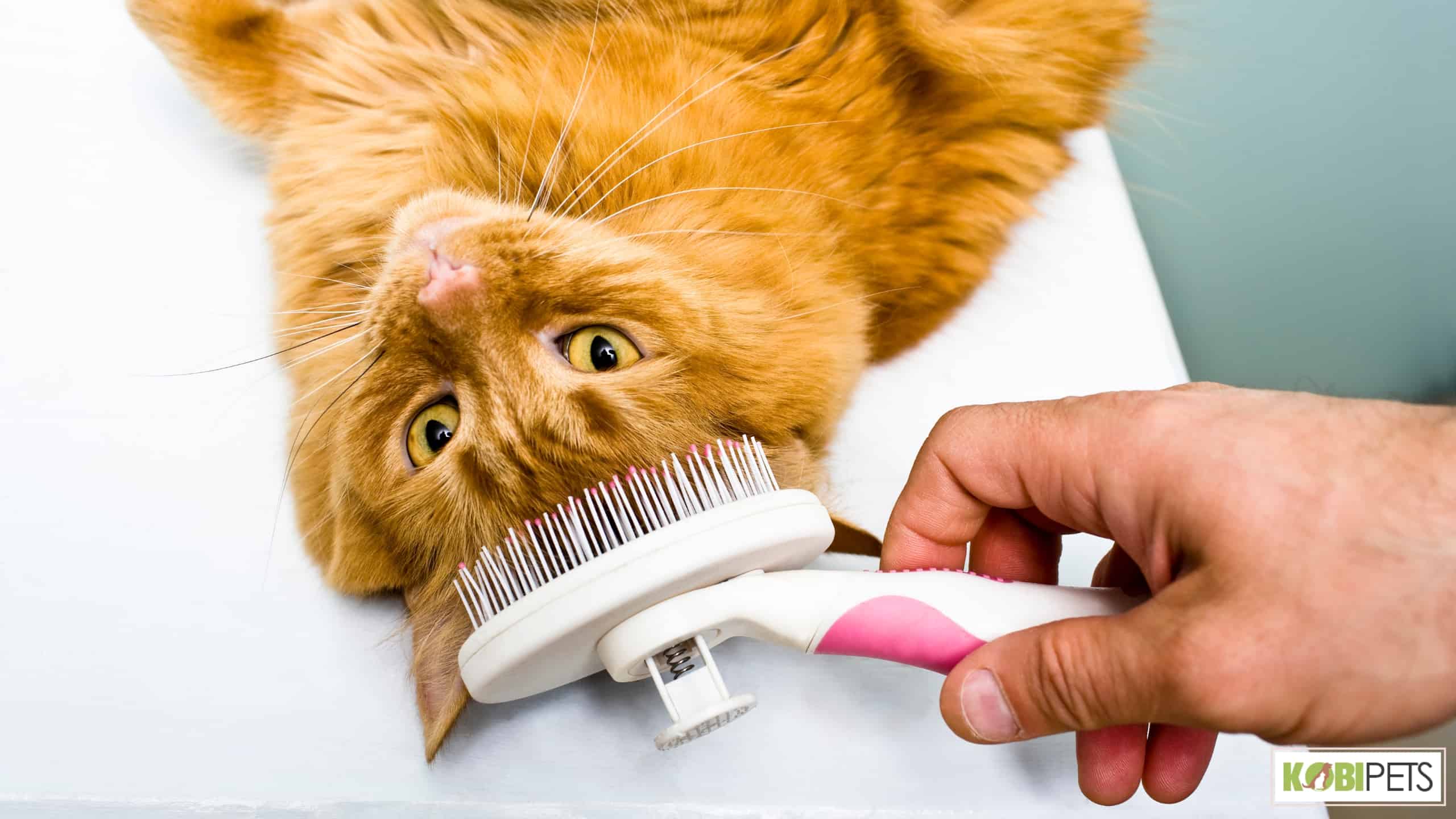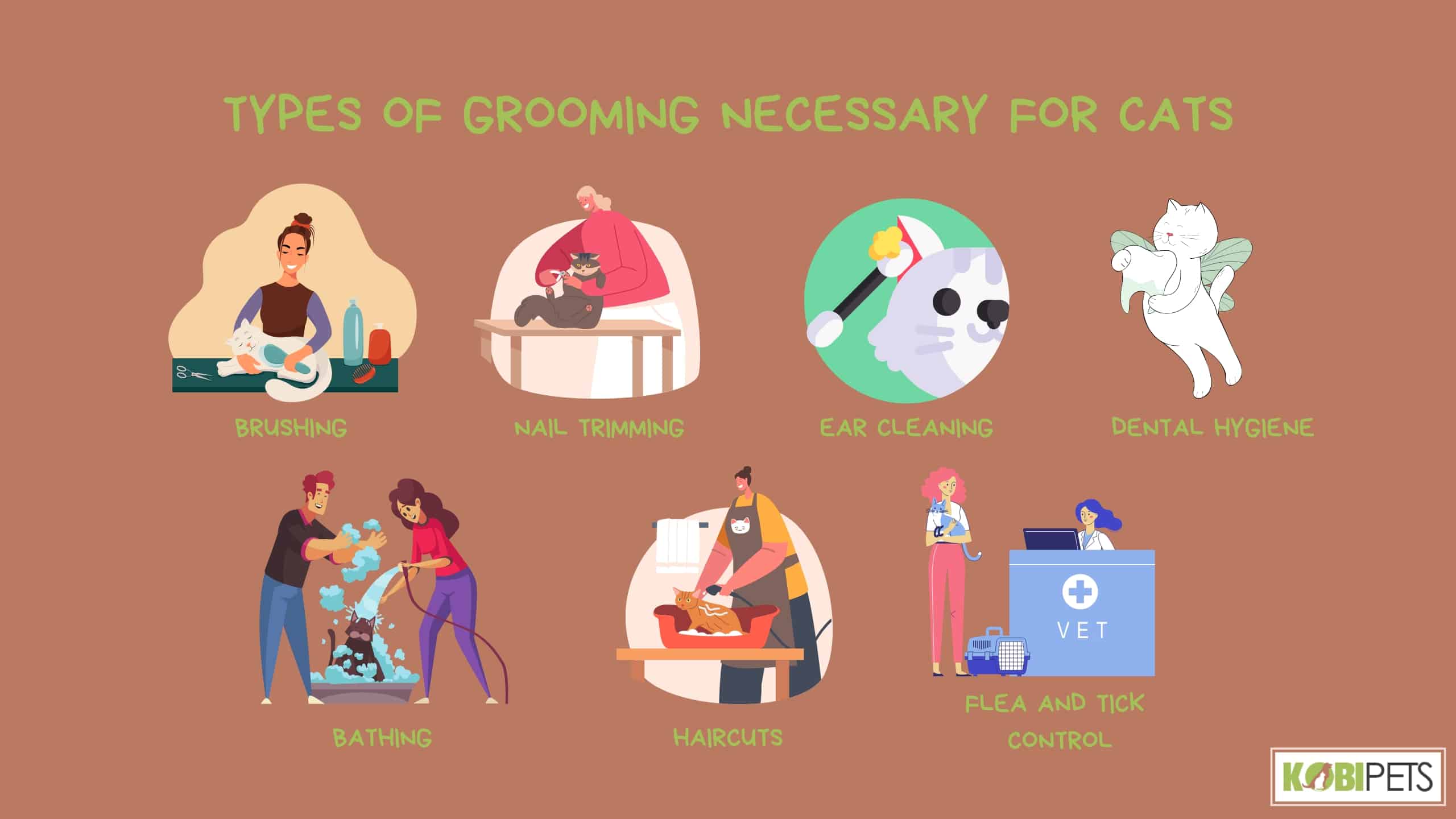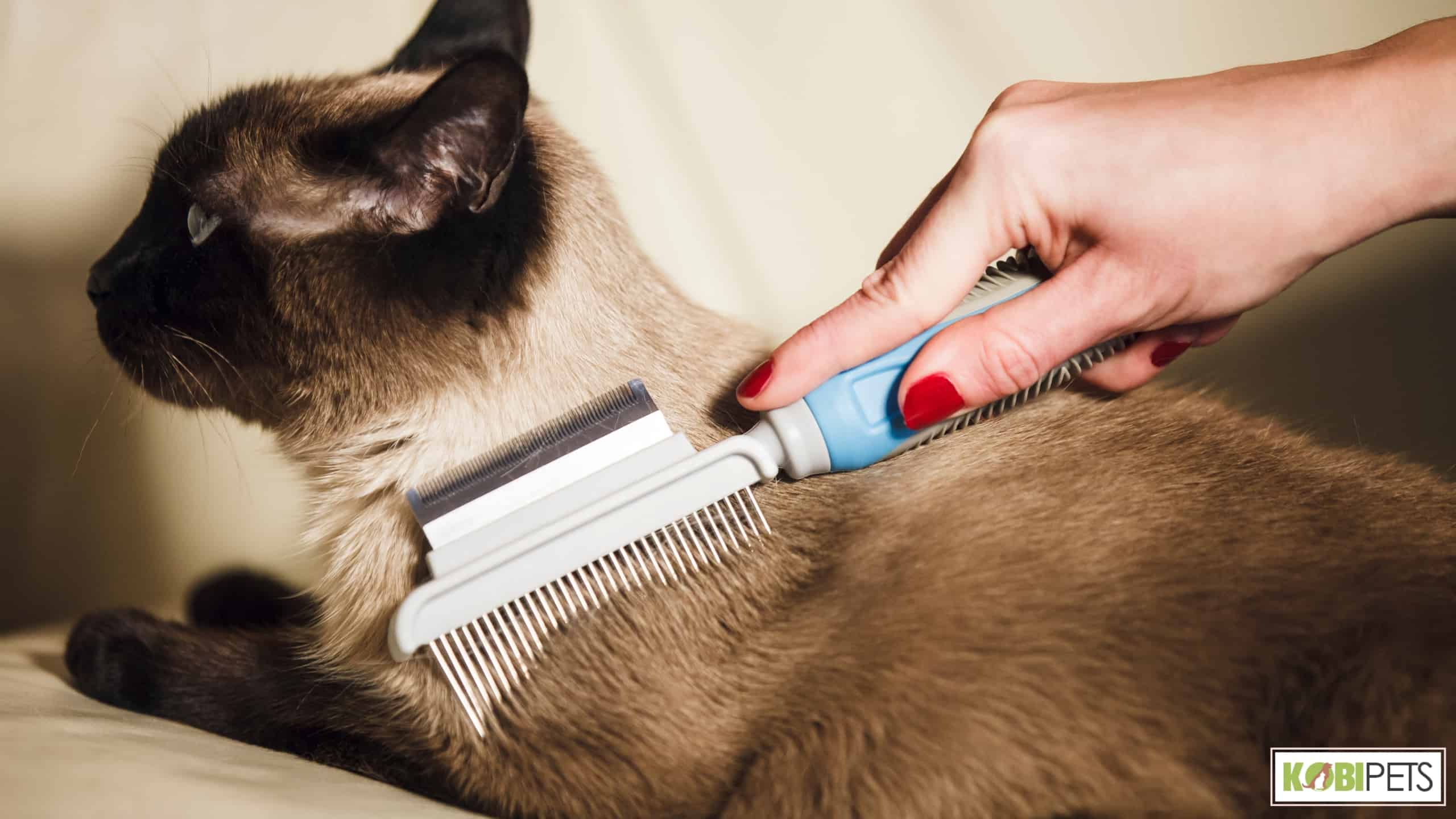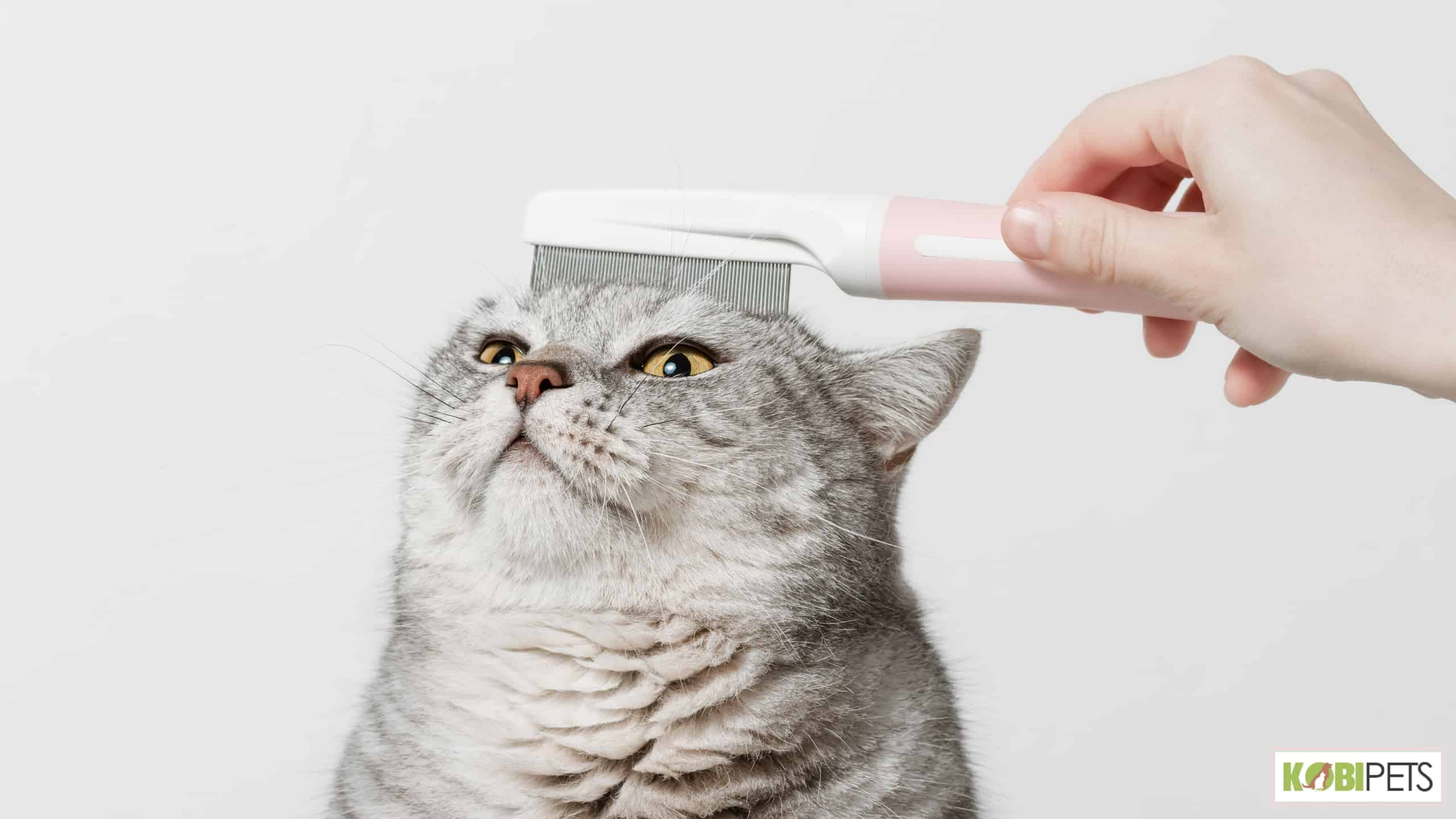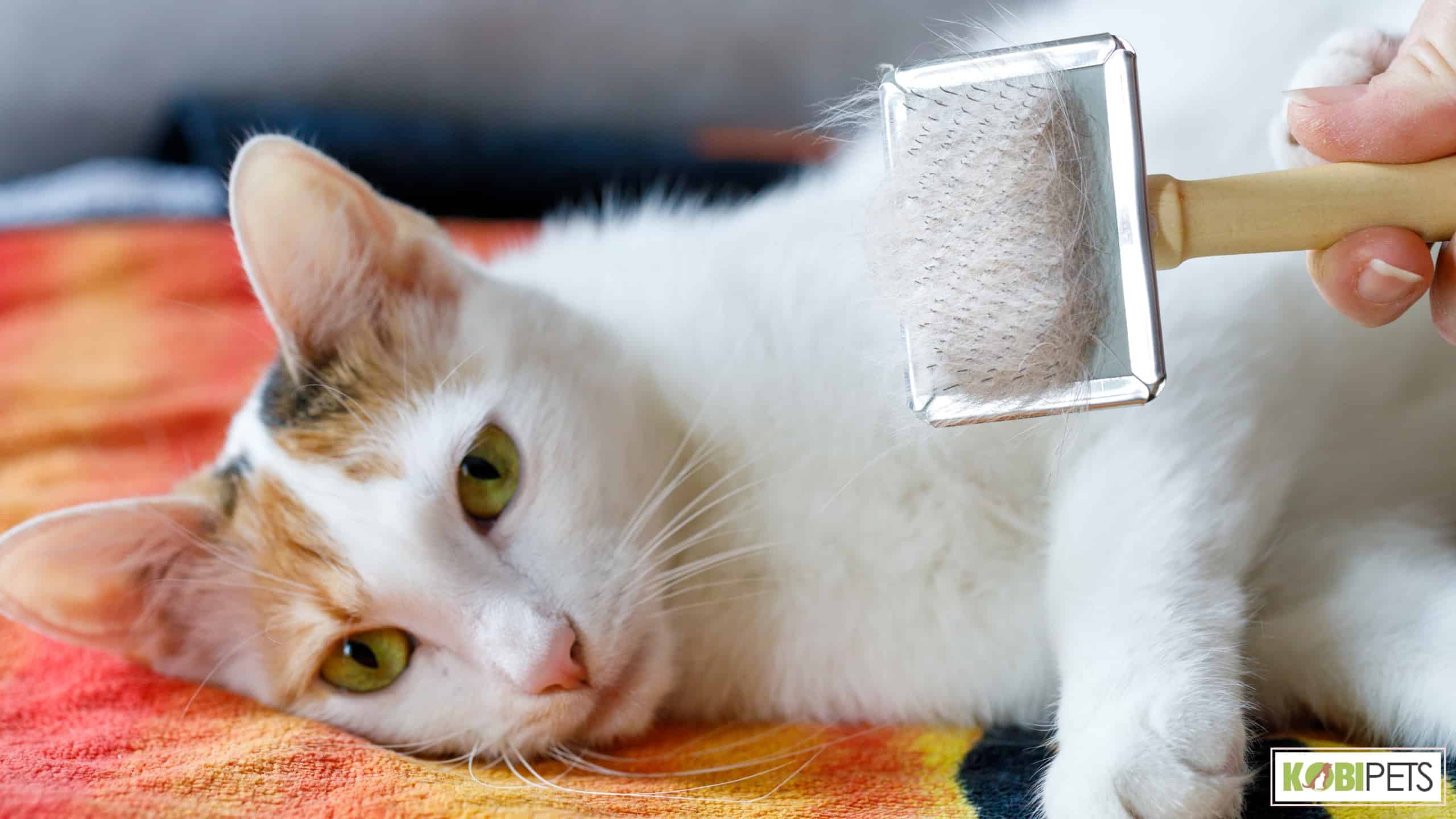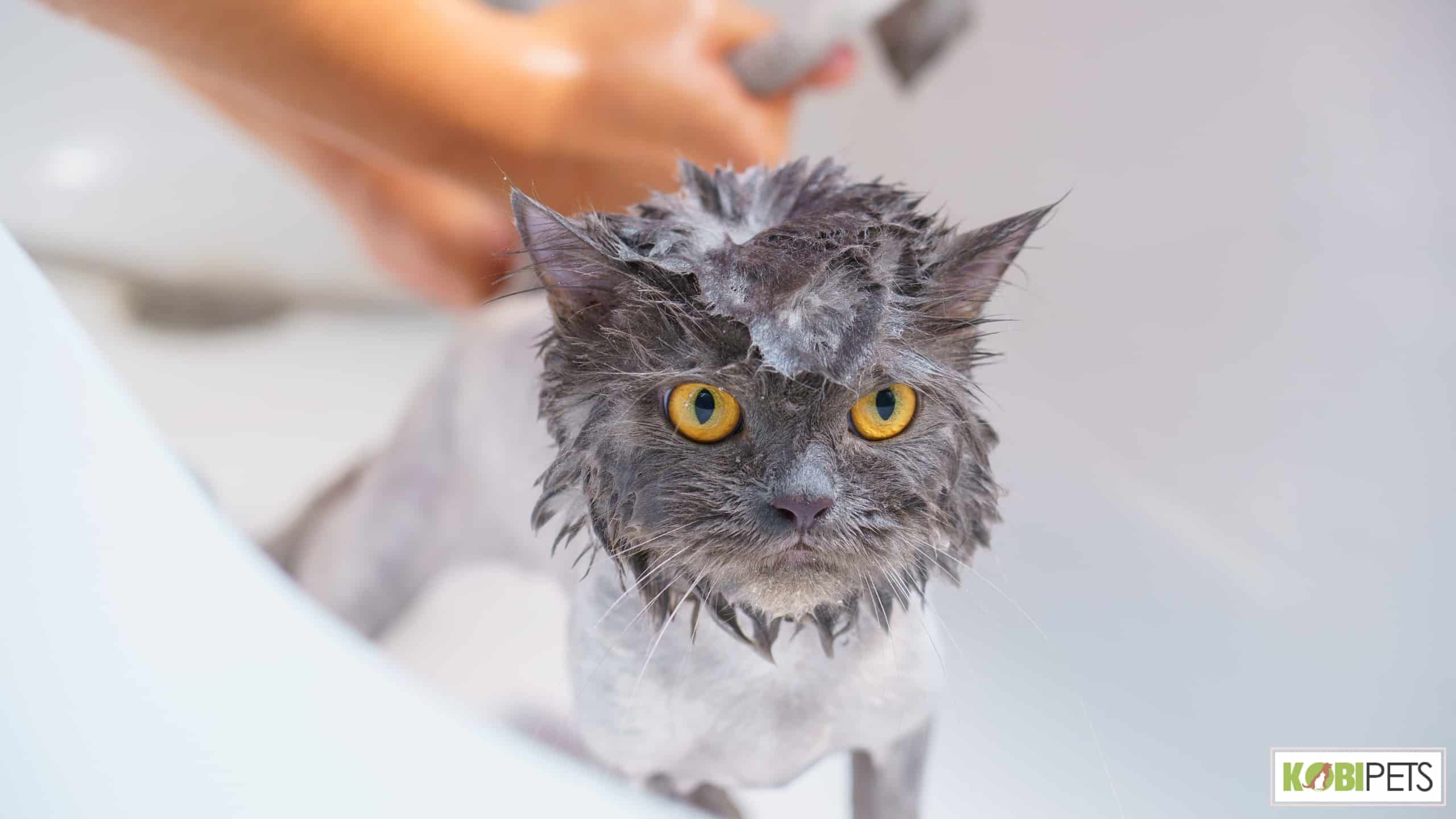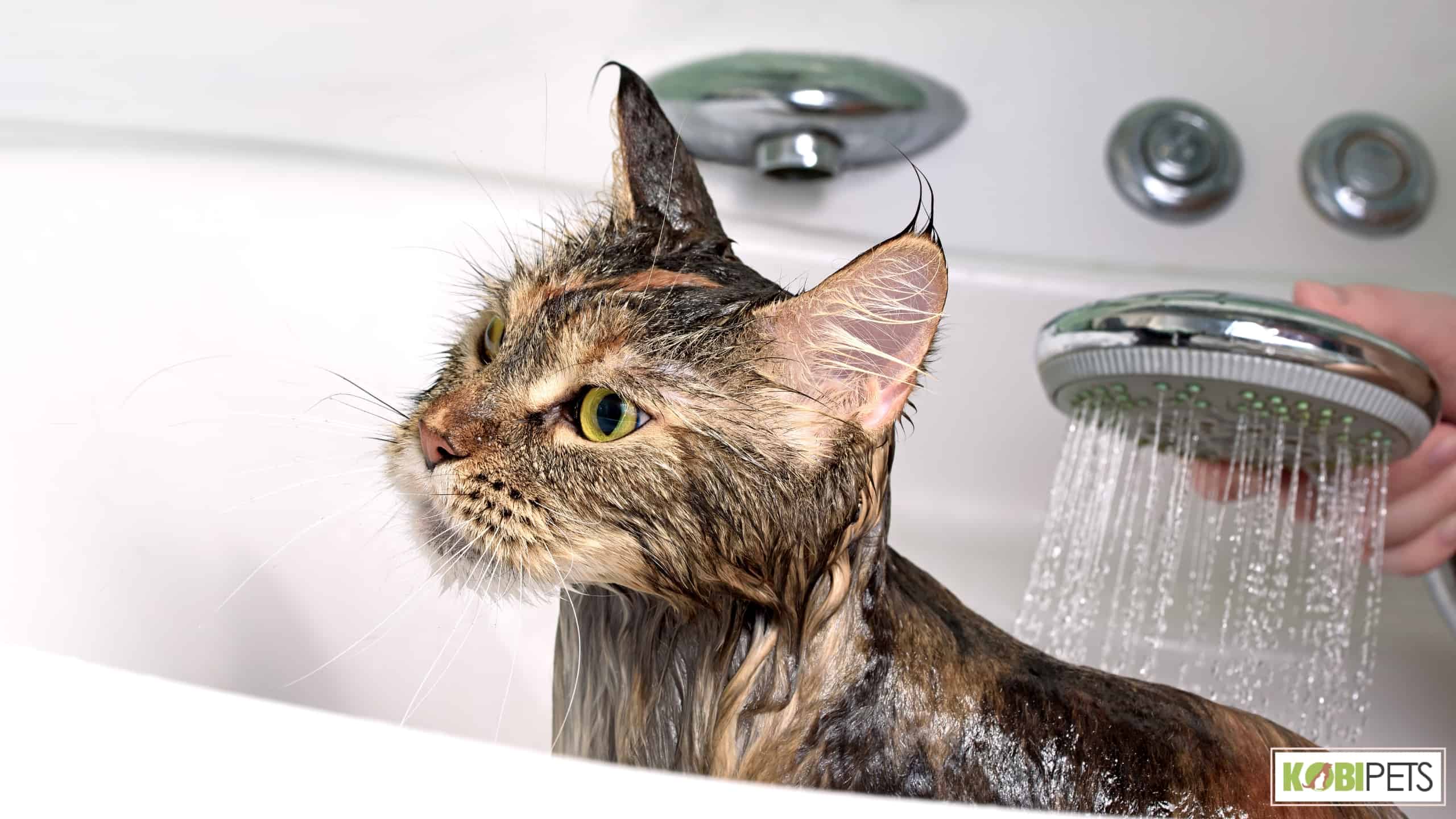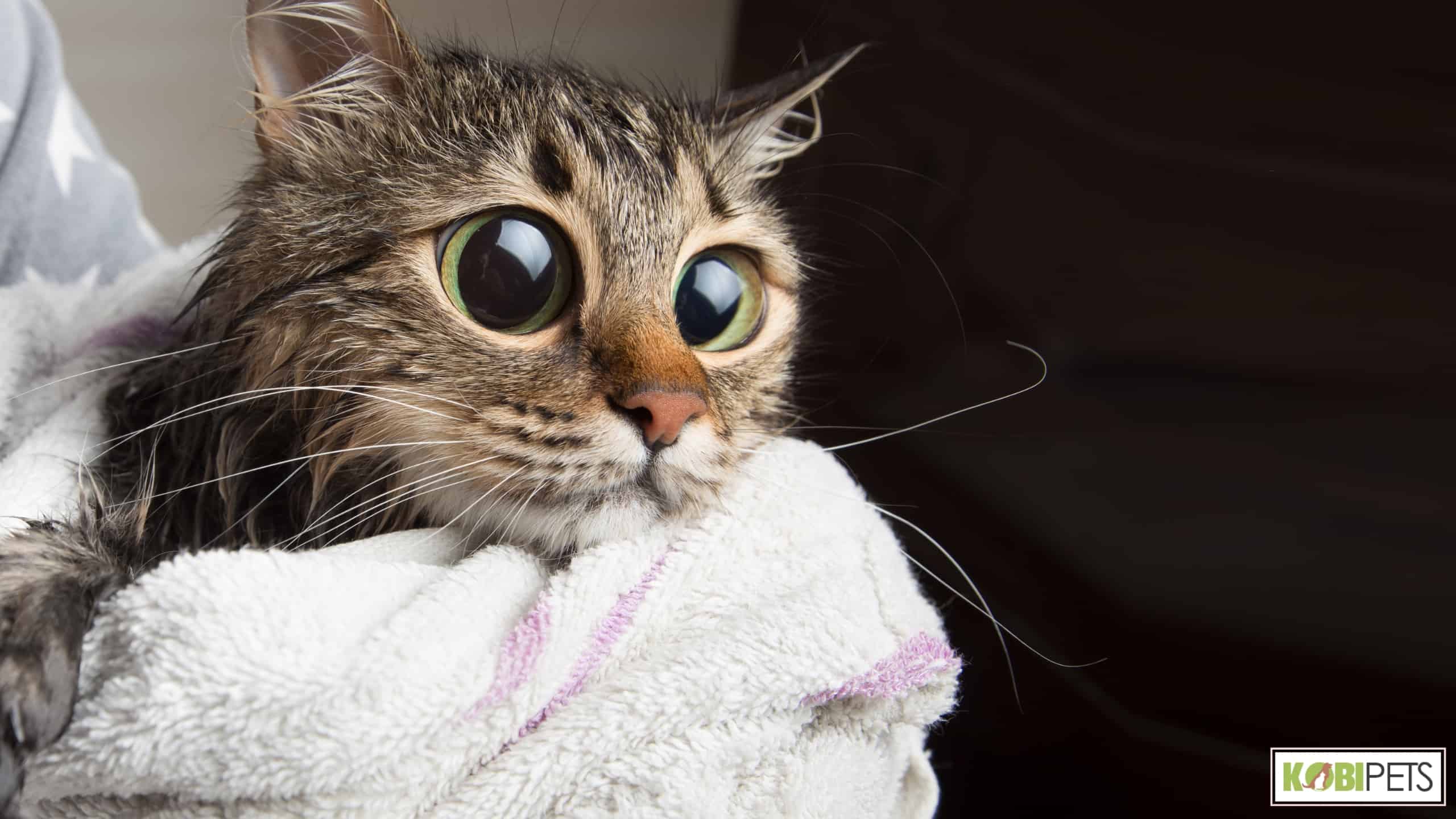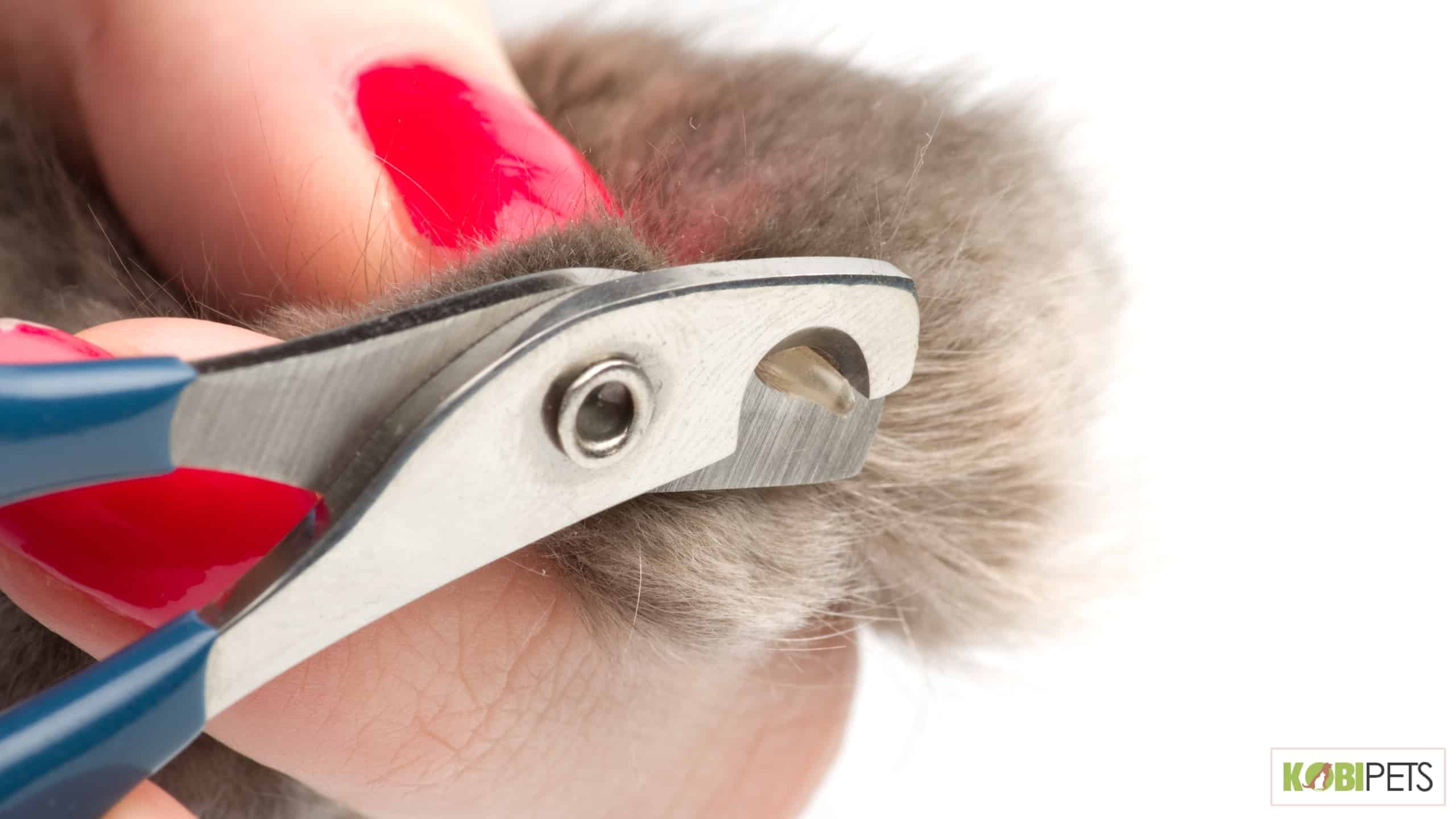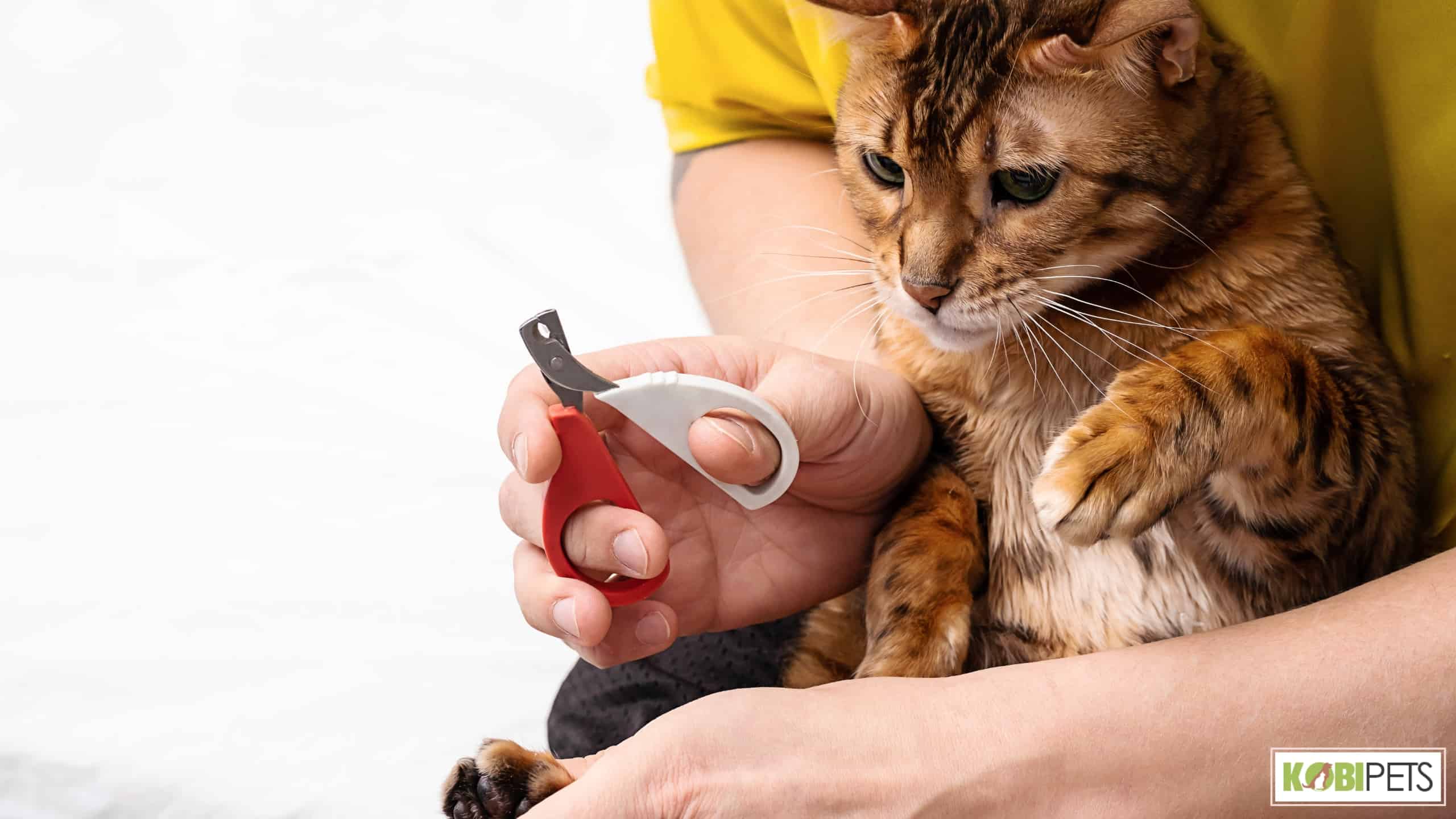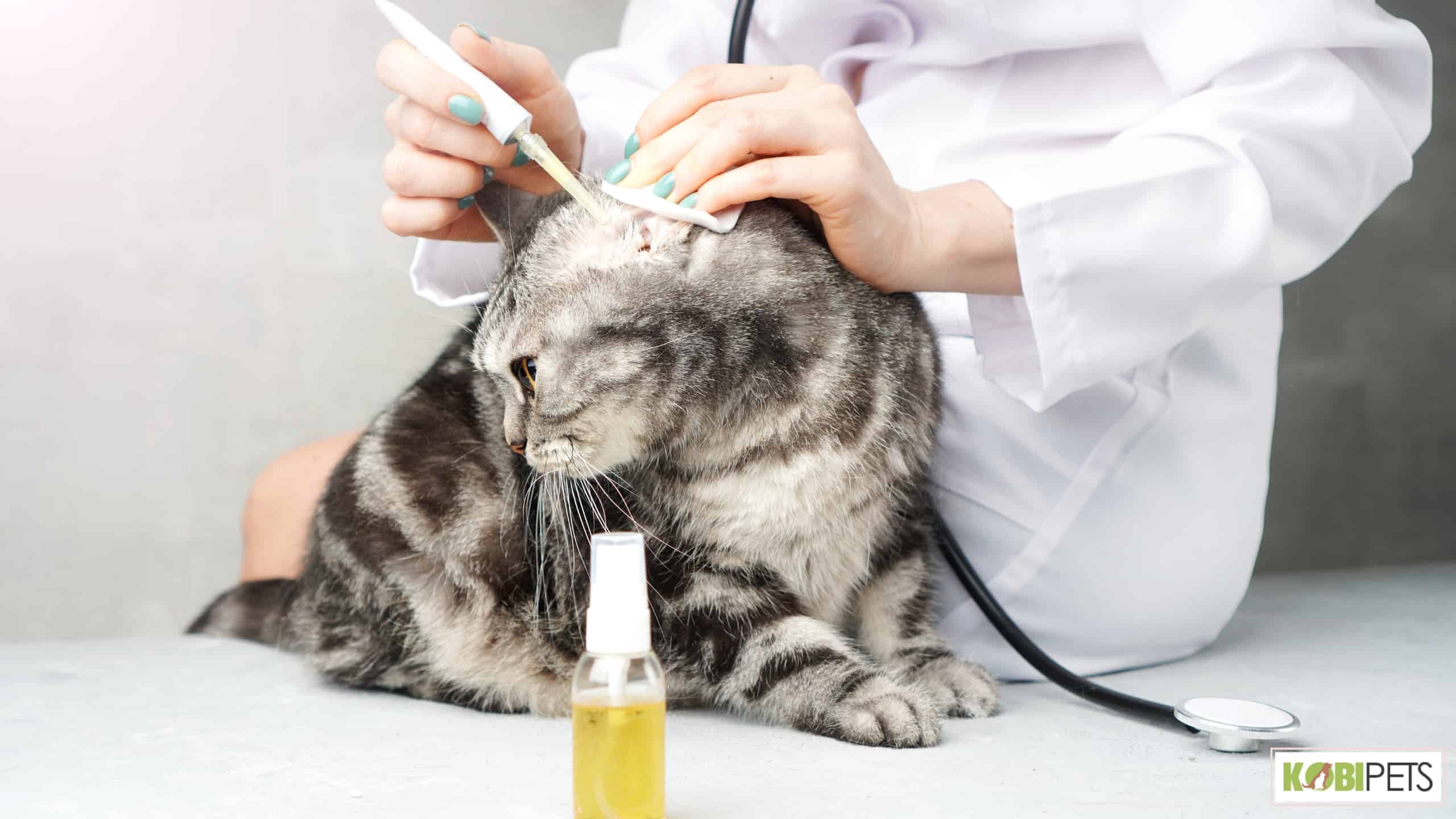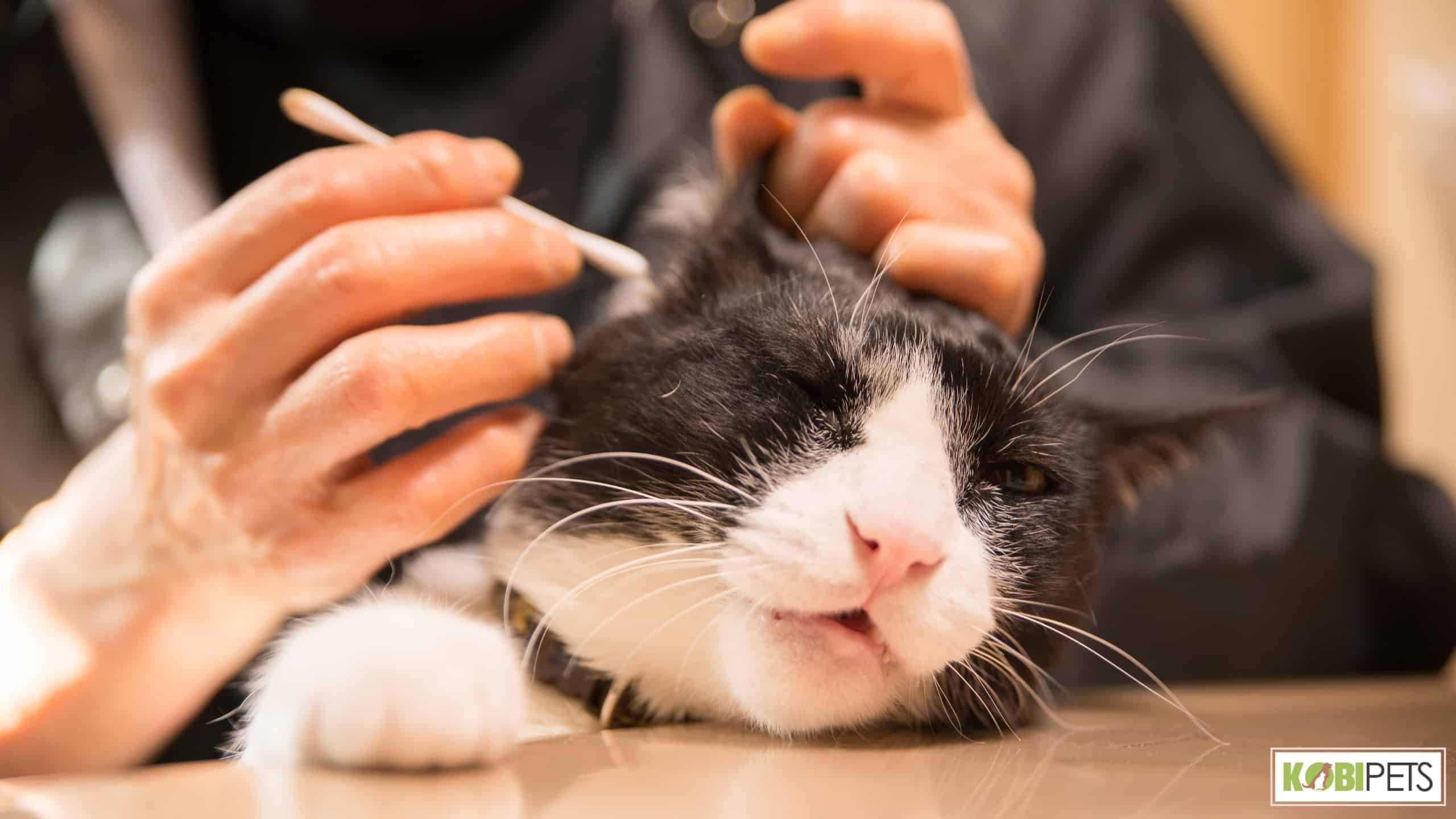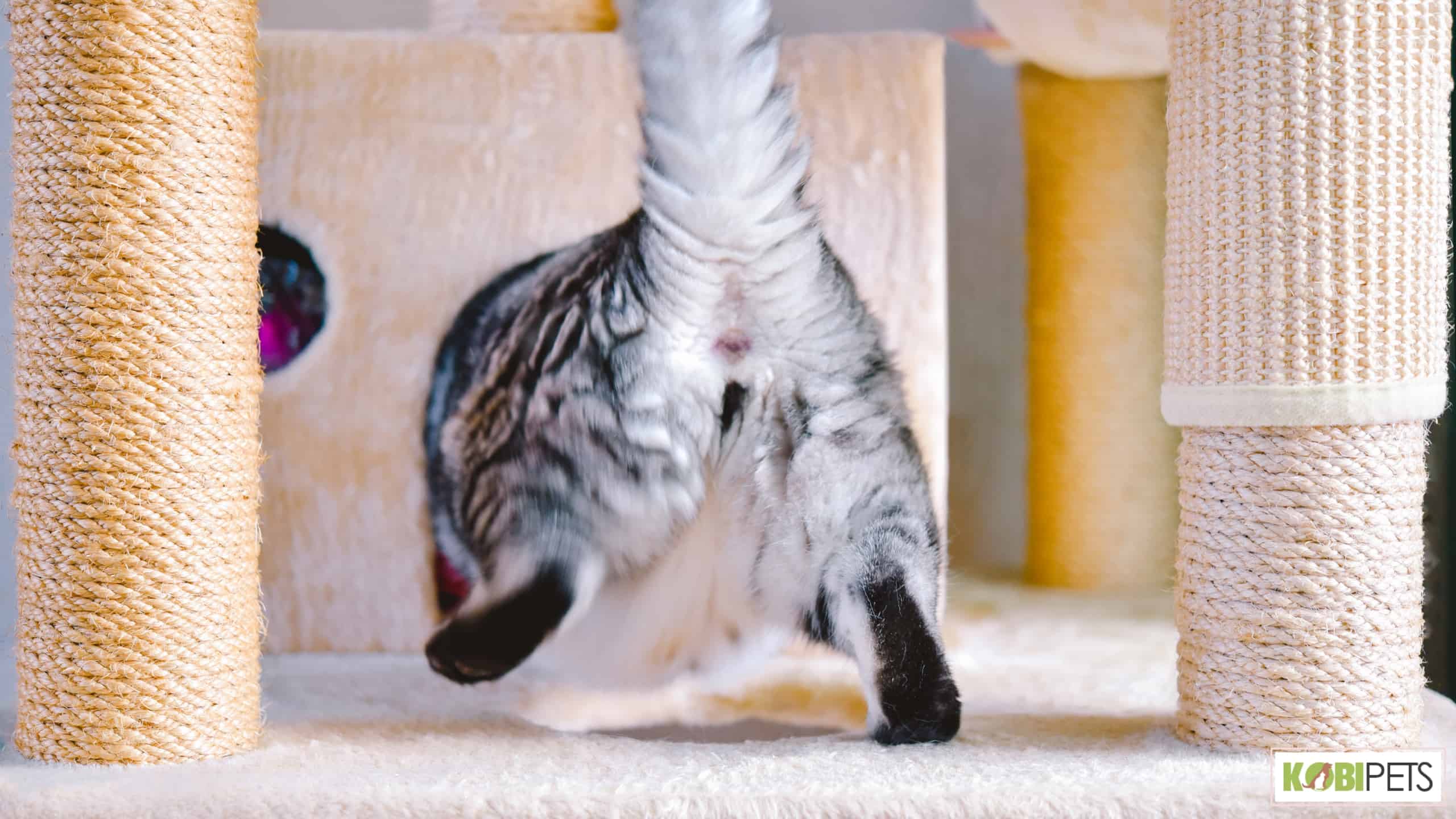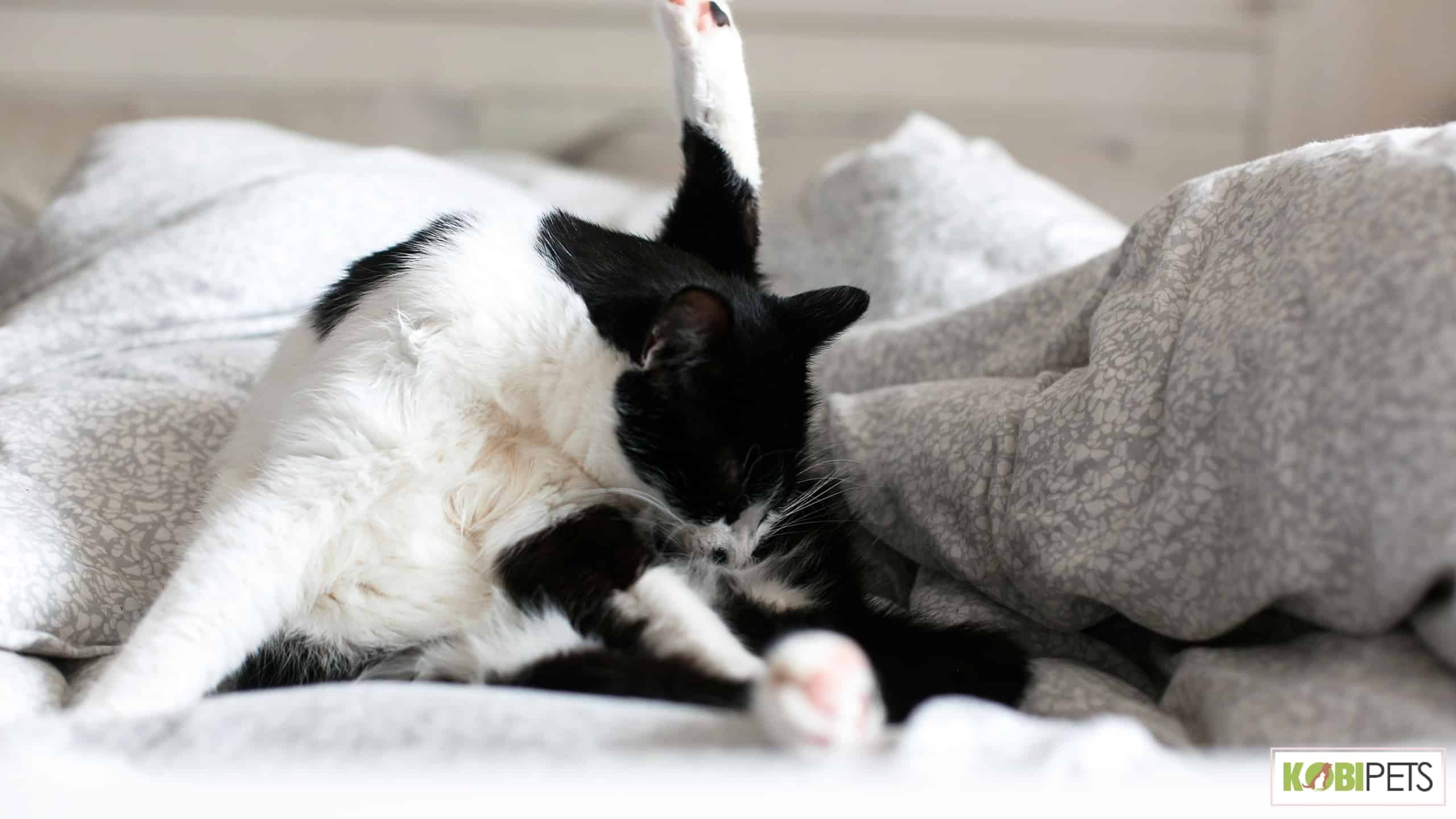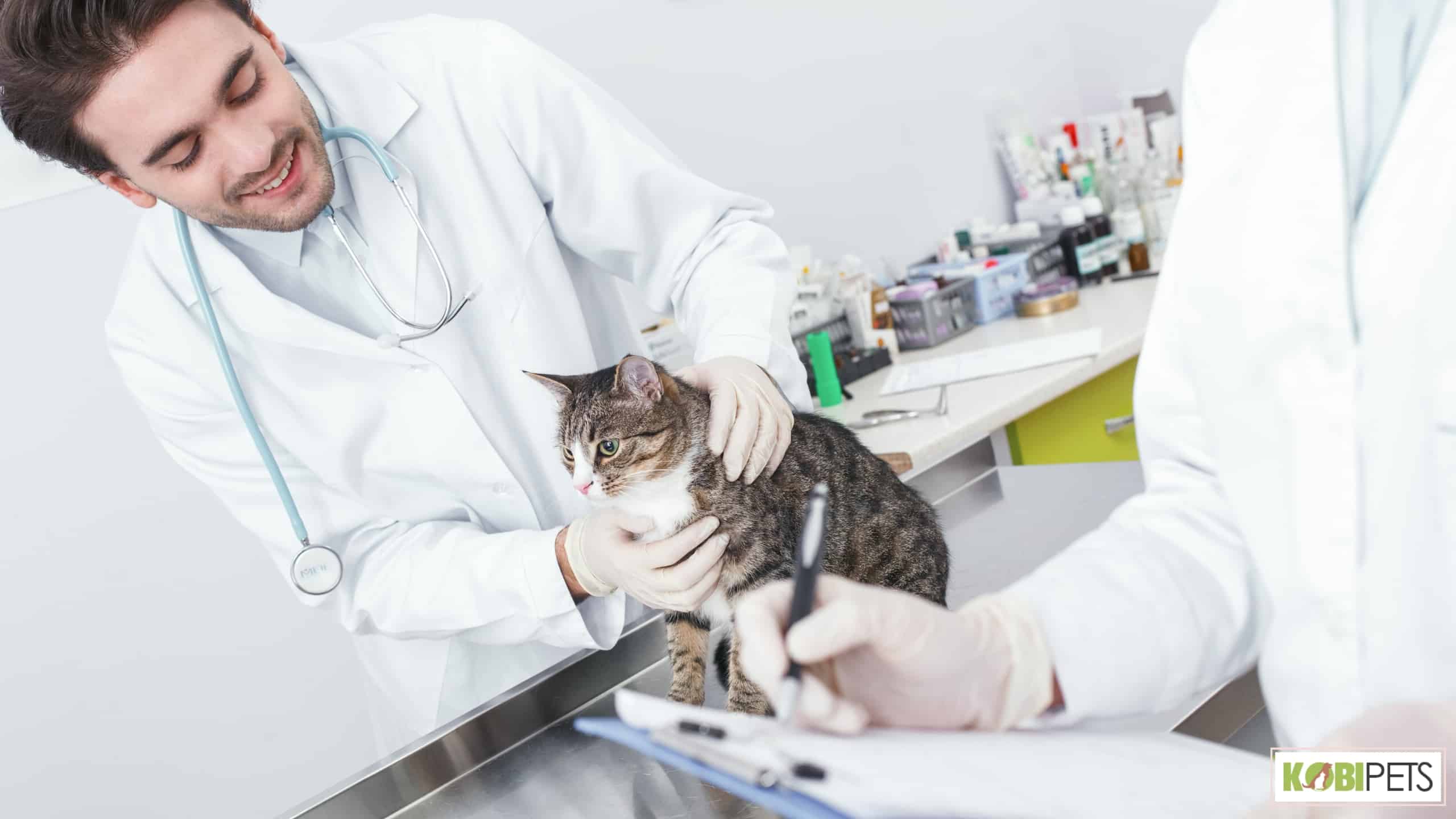
Grooming your cat is essential to keeping them looking and feeling great. From brushing and combing to nail trimming, bathing, ear cleaning, and anal sac expression – regular grooming for your feline friend can help keep them healthy and happy.
In this guide, we’ll discuss the different types of grooming necessary for cats, such as brushing and combing, bathing, nail trimming, ear cleaning, and anal sac expression.
Benefits of Grooming Your Cat
Grooming your cat has several benefits for both the cat and the owner. Some of the most notable benefits include:
- Improved physical health: Regular grooming helps to remove dirt, debris, and loose hair from your cat’s coat, reducing the likelihood of skin irritation and infection. It also promotes a healthy coat by distributing natural oils throughout the hair.
- Reduced shedding: Brushing your cat regularly can help reduce the amount of shedding, keeping your home cleaner and reducing the amount of hair you find on your clothes and furniture.
- Early detection of health issues: When you groom your cat regularly, you’ll become familiar with their normal appearance and behavior. This makes it easier to spot any changes that could indicate a health problem, such as lumps, bumps, or changes in the coat or skin.
- Bonding experience: Grooming your cat is a great way to spend time with your pet and strengthen the bond between you. It’s also a great opportunity to check for any physical issues or abnormalities.
- Reduce behavioral issues: Cats that are not groomed regularly may develop behavioral issues such as aggression or anxiety. Regular grooming can help prevent these issues and improve your cat’s overall behavior.
- Better hygiene and appearance: Regular grooming helps to keep your cat clean and well-groomed, improving their overall appearance and hygiene.
Overall, regular grooming is an important aspect of cat care that can help keep your feline friend looking and feeling great while also providing numerous benefits to the owner.
Types of Grooming Necessary for Cats
There are several types of grooming necessary for cats to maintain their physical and mental well-being. These include:
- Brushing: Brushing your cat’s coat regularly helps to remove dirt, debris, and loose hair, reducing the likelihood of mats and tangles. It also promotes a healthy coat by distributing natural oils throughout the hair.
- Nail trimming: Trimming a cat’s nails is important to prevent painful overgrowth and injury to both the cat and the owner. It’s important to use sharp clippers and be careful not to cut too close to the quick, which is the sensitive area of the nail that contains blood vessels and nerves.
- Ear cleaning: Cats have a tendency to accumulate ear wax, which can lead to infection if not cleaned regularly. It’s important to use a gentle ear cleaner and cotton balls to clean the outer ear, being careful not to insert anything into the ear canal.
- Dental hygiene: Dental hygiene is important for cats to maintain good oral health and prevent bad breath, tartar buildup, and other dental issues. Dental chews, water additives, and regular dental check-ups can help prevent dental issues.
- Bathing: While cats are generally good at keeping themselves clean, there may be times when a bath is necessary. It’s important to use a mild shampoo and to make sure the cat is fully rinsed and dried afterward.
- Haircuts: Long-haired cats may require regular haircuts to prevent matting and tangling. It’s important to use scissors or clippers and to be careful not to cut too close to the skin.
- Flea and tick control: Regular flea and tick control is important to prevent infestations and keep your cat healthy and comfortable. This can be done through the use of topical or oral medications, or through regular vacuuming and cleaning of the cat’s living areas.
Overall, regular grooming is an essential part of maintaining your cat’s physical and mental well-being. It is important to establish a regular routine and to use the right tools and techniques to ensure your cat is well-groomed and healthy.
Brushing and Combing
Different Types of Brushes and Combs
There are several types of brushes and combs available for cat grooming, each with a specific purpose and function. Some of the most common types include:
- Slicker brush: A slicker brush has fine, thin wire bristles that are close together. This type of brush is great for removing tangles and mats, and for distributing oils throughout the coat.
- Grooming rake: A grooming rake has wider teeth that are farther apart. This type of brush is great for removing loose hair, dirt, and debris, and for breaking up mats and tangles.
- Bristle brush: A bristle brush has stiff bristles that are great for removing dirt and debris, and for polishing the coat.
- Furminator: A Furminator is a special tool designed to remove loose undercoat hair without damaging the topcoat. It’s great for cats that have a lot of shedding.
- Pin brush: A pin brush has metal pins that are great for detangling and removing loose hair.
- Comb: A comb has wider teeth at one end and finer teeth at the other end, which makes it great for removing tangles and mats. It also helps to distribute oils throughout the coat.
- Mat breaker: A mat breaker is a metal comb that has a row of sharp teeth that are great for breaking up mats and tangles.
- Rubber brush: Rubber brush is great for removing dirt and debris, and for promoting a healthy coat by distributing oils throughout the hair.
It’s important to note that not all cats have the same coat type and some may require different grooming tools, it’s always best to consult with your vet or groomer to determine which grooming tools are best for your cat’s specific needs.
It’s also important to make sure that the tools you choose are safe and gentle for your cat to avoid causing any discomfort or injury.
How to Groom with a Brush or Comb
Grooming your cat with a brush or comb is important to help keep its fur and skin healthy. To start, use the right brush or comb based on your cat’s coat type. Long-haired cats require a different kind of tool than short-haired cats.
When you begin grooming, it is best to look for mats and tangles first. Make sure to be gentle when brushing and focus on getting the knots out without hurting your cat. Additionally, while brushing, go against the fur grain before going with it to reduce shedding and help with the distribution of natural oils in their coat.
Finally, make sure to regularly empty out your brush or comb and — most importantly — give love and praise throughout the process for an enjoyable experience for both of you!
When to Brush Your Cat
Grooming your cat is an important part of a healthy lifestyle for your pet. Brushing helps to detangle and remove excess fur while also helping to distribute oils through their coat. It’s recommended you brush your cat at least once per week, although more frequent brushing during periods of shedding can be beneficial.
When brushing longer-haired cats, always begin from the head and work backward to the tail. Work in sections if necessary for more thorough coverage and be sure to use a brush specifically designed for cats’ coats. If done properly, brushing your cat can be an enjoyable, bonding experience that offers multiple benefits.
Bathing Your Cat
Reasons for Bathing Your Cat
There are several reasons why you may need to bathe your cat, including:
- Dirty coat: If your cat gets dirty or has a strong odor, a bath can help to clean and freshen up its coat.
- Flea and tick infestation: If your cat has a flea or tick infestation, a bath can help to remove the pests and prevent them from spreading.
- Medical conditions: Cats with certain medical conditions, such as allergies or skin issues, may require regular baths to help manage their symptoms.
- Grooming preparation: If you are planning to groom your cat, such as giving them a haircut or trimming their nails, a bath can help to make the process smoother and less stressful for the cat.
- Behavioral issues: Cats that are not groomed regularly may develop behavioral issues such as aggression or anxiety. Regular grooming can help prevent these issues and improve your cat’s overall behavior.
- Show preparation: If you plan to show your cat in a competition, a bath may be necessary to get them in top condition.
It’s important to note that not all cats enjoy baths, and some can become stressed or anxious during the process. It’s always best to start bathing your cat at a young age so they become accustomed to it and to use a mild shampoo specifically formulated for cats.
It’s also important to monitor your cat’s behavior and make sure they are comfortable throughout the process.
How to Give Your Cat a Bath
Bathing your cat is not always an enjoyable task for either party – you or your pet. That said, it can be a necessity for various reasons. Before diving into the process, make sure you are adequately prepared.
Gather supplies like a towel, a shallow basin filled with lukewarm water (ideally, lower than the temperature of your skin), mild shampoo specifically made for cats, and treats to reward your pet after bath time.
When you are ready, cautiously bring the basin closer to your cat in a calm and friendly way while speaking in soothing tones; this will help them feel more secure. Let the cat lick from or dip its paw into the water first before placing them inside so they are not startled. After rinsing and drying off your pet, do not forget to reward them with a treat for behaving well!
Drying and Grooming After the Bath
Grooming and drying your cat after its bath is a crucial step for ensuring its health and well-being. When bathing, it’s important to be careful with the shampoo you use, as some products may irritate your pet’s skin or make them uncomfortable.
After coming out of the bath, towel dry your pet to remove any excess water and then gently brush their fur to avoid any knots or tangles. For an extra soft coat, consider applying a finishing spray that can also protect against fleas.
Finally, regular brushing will help reduce hair fall In the house while keeping your cat’s coat glossy and beautiful at the same time!
Nail Trimming
Tools Needed for Nail Trimming
To trim your cat’s nails, you will need the following tools:
- A pair of sharp cat-specific nail clippers or scissors.
- A styptic powder or pencil to stop bleeding in case you accidentally cut the quick (the pink part of the nail that contains blood vessels and nerves).
- Treats or a favorite toy to reward your cat for good behavior during the trimming process.
- A helper if your cat is squirmy or aggressive.
It’s important to use cat-specific clippers or scissors, as they are designed to trim the thin, sharp nails of a cat.
Also, before starting the process, make sure your cat is comfortable and relaxed.
Trimming the Nails
Grooming your cat is essential in order to maintain a healthy, comfortable lifestyle. One of the activities you need to do when grooming your cat is trimming its nails. This may sound daunting at first, but by following certain steps and providing ample rewards you can make it a positive experience for both you and your furry friend.
The right tools will help ensure proper trimming of the nails with minimal stress on your cat’s part and promote healthy nail growth. It’s important to remember to trim just one nail at a time, praising and rewarding them along the way; this will minimize anxiety and encourage an enjoyable experience for both of you.
Ear Cleaning
Tools Needed for Ear Cleaning
To clean your cat’s ears, you will need the following tools:
- A gentle, cat-specific ear cleaner solution.
- Cotton balls or soft cotton pads.
- A small, soft-bristled brush.
It’s important to use a cat-specific ear cleaner solution, as the pH balance of a cat’s ears is different from that of a dog or a human. The cleaner should not contain any alcohol or other harsh chemicals that can irritate the delicate skin in the ear.
Signs of Potential Ear Issues
There are several signs that your cat may have an ear issue that needs to be addressed by a veterinarian. These include:
- Excessive scratching or shaking of the head: This can indicate itchiness or discomfort in the ears.
- Redness or inflammation in the ear: This can be a sign of an infection or allergies.
- Discharge or a foul odor: This can be a sign of an infection, yeast, or bacteria.
- Loss of balance or head tilt: This can indicate an inner ear problem. Constant head shaking, frequently tilting the head or holding it at an angle, and circling can be symptoms of the vestibular syndrome.
- Whining or crying when the ears are touched: This can indicate pain or discomfort.
- Swelling or lumps in the ear: This can be a sign of cancer or other serious health issues.
It’s important to keep an eye on your cat’s ears and to address any issues as soon as possible to prevent further complications. If you notice any of these signs, it’s best to consult a veterinarian as soon as possible.
How to Clean Your Cat’s Ears
Grooming your cat can be a tricky task, especially when it comes to cleaning its ears. To properly clean your cat’s ears you should use warm water and a specially designed ear cleaner for cats.
Begin by lightly moistening a cotton ball with the cleaner and gently wiping any dirt or wax from within the visible portion of the ear flap. Make sure to only work around the part of the ear that is visible from outside the head and carefully avoid going too deep into the canal which could cause discomfort.
This method should be done at least once a month in order to keep your cat’s ears healthy. Removing any debris and excess wax will also help prevent infection and improve airflow in the ear canal.
Anal Sac Expression
What Are Anal Sacs?
Anal sacs are small glands located on either side of a cat’s rectum. They contain a strong-smelling fluid that cats use as a territorial marker and also a form of communication with other cats.
It is important that owners pay attention to their cat’s anal sacs during the grooming routine, as they can become full and even infected if not emptied out in time. That being said, expressing anal glands should preferably be done by a veterinarian – it is easy for owners to accidentally cause injury if they are unfamiliar with how to properly express them.
Regular brushing and bathing help to keep anal sacs healthy and working properly, so cat owners should also make sure they provide plenty of grooming opportunities for their pets.
Signs of Anal Sac Problems
Anal sac problems, also known as anal gland problems, can cause discomfort and pain for cats. Some signs of anal sac problems include:
- Scooting or dragging the hind end on the ground: This can indicate that the cat is trying to relieve itchiness or discomfort in the anal area.
- Licking or biting at the anus: This can indicate that the cat is trying to relieve itchiness or discomfort.
- Constipation or diarrhea: These can be symptoms of anal sac impaction.
- Swelling or lumps around the anus: This can indicate an abscess or blockage in the anal sacs.
- Foul-smelling discharge: This can indicate an infection in the anal sacs.
- Straining or crying when defecating: This can indicate that the cat is in pain due to anal sac impaction or infection.
If you notice any of these signs, it’s best to consult a veterinarian as soon as possible. Anal sac issues can be treated through manual expression, antibiotics, and even surgery in some cases.
How to Express Anal Sacs
Grooming your cat is an important part of keeping your furry friend healthy and happy. One of the more important yet often overlooked grooming tasks is expressing your cat’s anal sacs. This helps to reduce the chances of impaction and other illnesses related to poor hygiene.
To express your cat’s anal sacs, place their hind end on a secure surface, preferably at waist level. Apply gentle pressure to each side of the anus and carefully massage in a circular motion until the product in the sacs starts to express itself.
If this doesn’t work, consult your veterinarian as they may be able to help or recommend another approach. Keeping up with this simple routine helps ensure that your cat stays clean and odor-free.
In Conclusion
Grooming your cat is an important part of maintaining a healthy lifestyle for your pet. Proper brushing, bathing, ear cleaning, nail trimming, and anal sac expression are all essential steps that should be taken to ensure their health and happiness.
However, it’s important to note that not all cats enjoy the same activities and some may require extra help and patience. With the right tools, attitude, and care, grooming your cat can be a pleasurable experience for both you and your pet.
